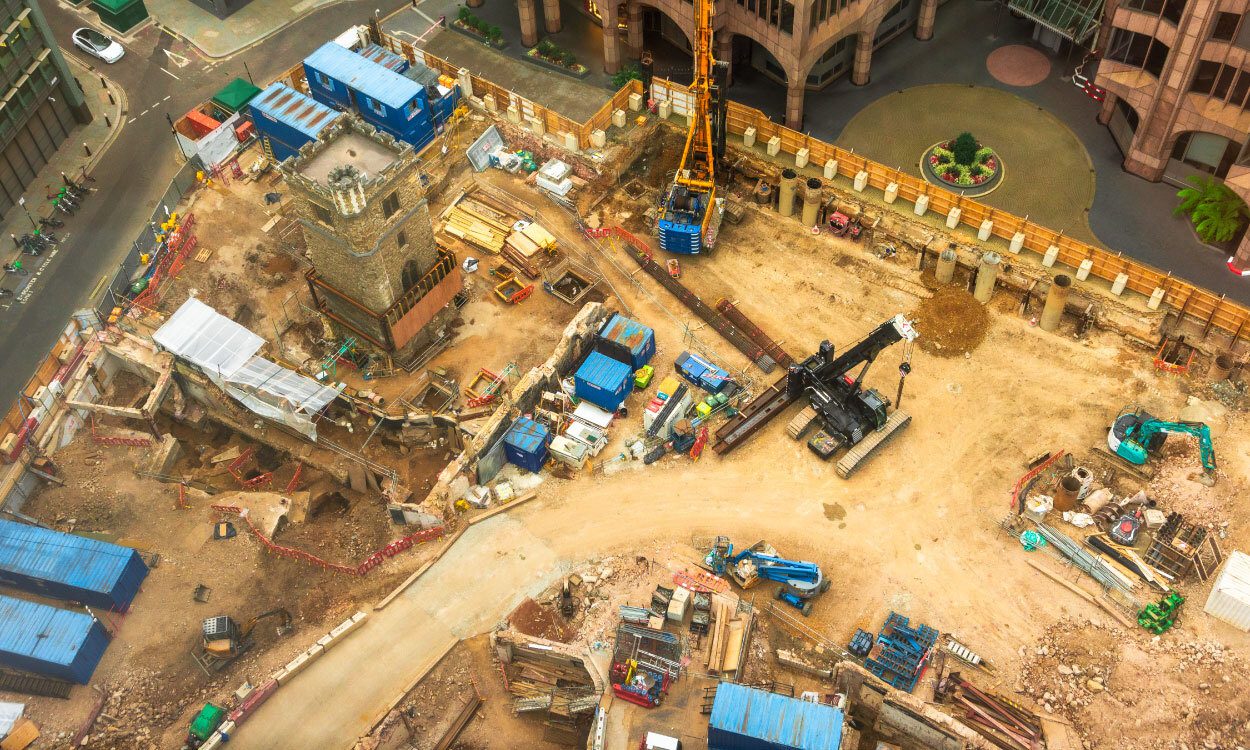

18 Sept 2025
How to Ensure Environmental Compliance on a Construction Site
Construction sites are at the heart of all modern infrastructure, creating our buildings, roads and all spaces that shape our communities. However, they also bring a wide range of environmental challenges. Dust, waste, emissions and water usage are just a few examples of the negative environmental impact the construction industry can have, and complying with environmental regulations is not just a legal responsibility; it’s also key to protecting ecosystems and workers.
As well as environmental responsibilities, construction companies also have to navigate the complex world of tax. At Contractwise, we’re a trusted CIS payroll company that provides a wide range of services that protect subcontractors and contractors and guarantee CIS compliance. Our payroll audits minimise the risk of costly HMRC reclassification, ensuring your construction business is never under threat.
In this article, we’ll take a closer look at how to ensure environmental compliance in construction.
Importance of environmental compliance in construction
Environmental compliance in construction isn’t optional, and it’s extremely important for a range of reasons, including:
Reduce pollution: Dust, chemicals and machinery emissions can damage the air and water quality. Strict compliance helps to minimise these impacts.
Use resources sustainably: Construction consumes vast amounts of raw materials. With this in mind, sustainable sourcing and efficient use protect finite resources.
Waste management: From packaging to demolition debris, managing waste from a construction site responsibly reduces landfill use and improves recycling.
Health and safety: Environmental measures often overlap with the safety of construction workers. This can include things like dust suppression, noise reduction, and properly handling hazardous substances.
In short, environmental compliance protects workers, the planet and the reputation of companies in the construction industry, and its importance cannot be overstated.
How to ensure environmental compliance on a construction site
Meeting environmental standards requires proactive planning and consistent monitoring. Some practical steps include:
Creating a site environmental management plan that sets out procedures for pollution prevention, waste handling and how to responsibly use resources.
Train workers regularly on the various compliance requirements, ensuring every team member understands their role.
Monitor site activities with regular checks to identify risks early.
Engage with environmental officers and regulatory bodies to ensure permits and licenses remain up to date.
Adopt sustainable practices and make them a habit, such as recycling construction materials or using more energy-efficient machinery.
By embedding these steps into your day-to-day work, construction companies can significantly reduce compliance risks.
Environmental regulations in construction
Construction in the UK is guided by a wide framework of regulations. Among the most important things to bear in mind are:
Clean Air Act
This legislation ensures dust, fumes and emissions that are produced during construction activities and from machinery are processed and controlled correctly to protect air quality.
Clean Water Act
This prevents pollutants, debris and chemicals from contaminating rivers, lakes and groundwater that are located near construction sites.
Resource conservation and recovery act
This focuses on managing solid and hazardous waste responsibly. It provides guidelines on how to properly recycle and safely dispose of all waste types.
Endangered Species Act
This protects local wildlife and habitat that could be disturbed or destroyed during construction activity.
Compliance with these regulations requires planning, monitoring and accurate record-keeping. Failure to adhere to them can lead to penalties, project delays and reputational damage.
Challenges in complying with environmental regulations for construction companies
While environmental compliance is essential and a legal requirement that construction sites must adhere to, it does come with a range of challenges:
Limited awareness and education: Not all site staff are familiar with environmental rules or how to apply them. With this in mind, proper training should always be provided.
Not integrating environmental regulations into projects: If compliance isn’t built into a project’s plans, it can become much harder to enforce later, so you should always check that it has been considered.
Availability of sustainable materials: Sometimes, it can be difficult to get hold of environmentally-friendly materials, and they might be more expensive to order. Despite this, an effort should always be made to source them.
Water conservation and management: Ensuring efficient water use and preventing contamination requires constant monitoring to make sure all regulations are being met.
Dust and air pollution control: Controlling airborne pollutants from excavation, cutting or transport is logistically demanding, but no shortcuts should be taken.
Compliance with waste management rules: Recycling, segregating and properly disposing of waste often involves coordinating with multiple waste management contractors.
Overcoming these challenges requires investment in training and strong leadership that always prioritises environmental performance.
What is an environmental compliance audit?
An environmental compliance audit is a structured review of a construction site to assess how well it meets the relevant regulations and sustainability standards. They’re a useful way to check how your site is complying with environmental rules.
Usually, it includes:
Pollution control: Checks for dust suppression, emissions reduction and spill prevention.
Waste management: Evaluates segregation, recycling and safe disposal of materials.
Water management: Ensures water runoff, chemical handling and water use are always compliant.
Permits and licenses: Confirms all required documentation is valid and up to date.
Habitats and wildlife: Reviews the impact of construction sites on and ensures protective measures are always followed.
Energy use: This examines the efficiency of all machinery, lighting and heating systems to keep emissions to a minimum.
Resource management: Assesses sourcing and use of materials, focusing on sustainability.
Regular audits are a proactive way to reduce risks, avoid fines and improve a company’s reputation when it comes to environmental measures.
As well as environmental compliance, contractors also face strict rules when it comes to the Construction Industry Scheme (CIS). Misclassification of subcontractors, payroll errors and failure to meet HMRC requirements all come with serious financial risks that can be devastating to your business.
At Contracwise, we can provide you with peace of mind, with key services like payroll audits, always keeping you compliant with your legal obligations. We’ll ensure your business stays on the right side of the regulations, so contact us today to find out more.